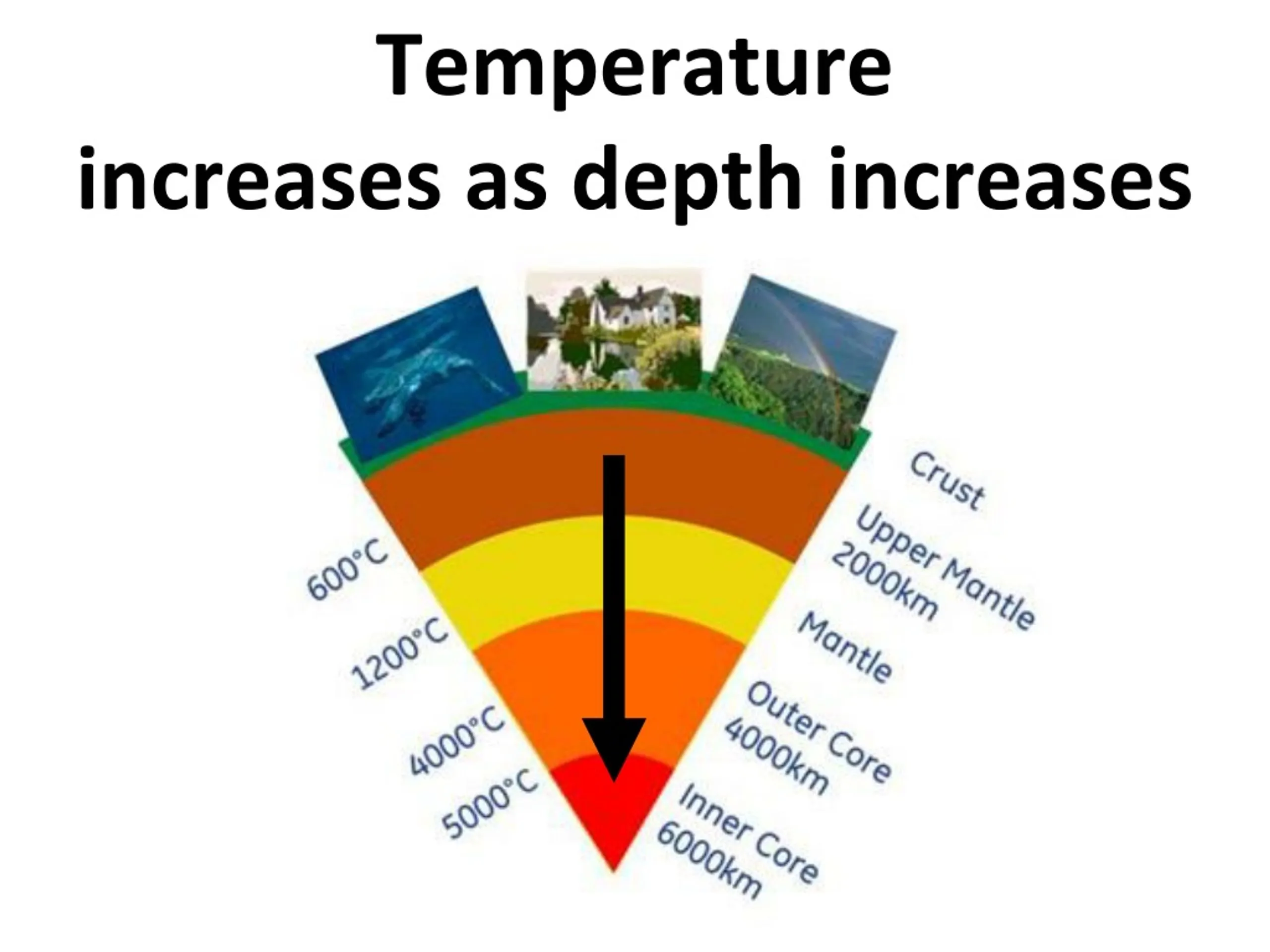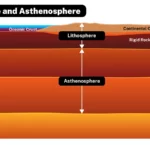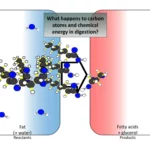Let’s take an exciting trip to the very heart of our planet and discover the secrets hidden within. Our guide will be the lithosphere, a rigid outer layer that covers our home. Imagine it as a giant, rocky shell surrounding the Earth. As we explore, we’ll uncover the mysteries of temperature changes within this mysterious layer and learn how they impact our planet’s behavior. So, fasten your seatbelts and get ready for a mind-boggling journey to the depths of our world.
What Temperature is the Lithosphere?
Ever wondered how hot it gets beneath our feet? We’re talking about the lithosphere, that solid, rocky shell that makes up the Earth’s outer layer. Let’s dive into this hidden world and explore its fascinating temperature variations!
Instead of a constant temperature, picture a giant, underground oven with different heat zones. At the surface, it’s pretty chill – the lithosphere simply mirrors the air temperature around us. But as we venture deeper, things get toasty!
Imagine a journey towards the Earth’s core. With every kilometer, the temperature climbs higher, like walking up a giant, natural staircase of heat. This gradual increase is called the geothermal gradient. By the time we reach the bottom of the lithosphere, the temperature can hit a scorching 1300°C under the oceans and a mind-blowing 2500°C below the continents!
Why the difference? Well, continents and oceans have distinct personalities when it comes to heat retention. Continental lithosphere, thick and aged like ancient bedrock, acts like a massive thermal blanket, trapping heat underneath. On the other hand, oceanic lithosphere is thinner and younger, allowing heat to escape more easily.
Think of it this way: the continental lithosphere is like a well-insulated thermos, keeping its contents warm for longer, while the oceanic lithosphere is like a regular cup of coffee – it cools down faster.
So, from the cool surface to the intense heat of the mantle below, the lithosphere’s temperature tells a story of dramatic change. This temperature gradient isn’t just a random occurrence; it plays a crucial role in shaping our planet’s dynamism, influencing everything from volcanic activity to the movement of tectonic plates. It’s a reminder that beneath the surface, our Earth is a world of incredible heat and constant motion.
Find out how what makes up the lithosphere and discover what are the asthenosphere facts.
What is the Lithosphere?
Imagine Earth as a giant, layered cake. We live on the very top layer, the crust, which is part of a thicker, more solid zone called the lithosphere. Think of it like the cake’s firm outer icing, but instead of sugar, it’s made of rock! This rocky shell isn’t uniform though; it can be as thin as 10 kilometers under the oceans or swell to a whopping 200 kilometers thick beneath towering mountain ranges.
The lithosphere isn’t just sitting still either. Deep within our planet, intense heat churns and flows, and the lithosphere reacts to this energy. It’s like a giant puzzle constantly shifting and rearranging its pieces. This movement is what causes earthquakes, volcanic eruptions, and even the slow, relentless drift of continents across the globe. These powerful forces shape our world, creating everything from majestic mountains to the deepest ocean trenches.
How Deep is the Lithosphere?
Imagine the Earth as a giant, layered cake. We live on the very top layer, the crust, but right beneath our feet lies a much thicker layer, the lithosphere. This zone isn’t just solid rock; it’s always on the move, a bit like a slow-motion puzzle with massive pieces constantly shifting and bumping into each other.
So how far down do you have to go to reach the bottom of this dynamic layer? Think about the distance from New York City to Philadelphia – that’s roughly how thick the lithosphere is under the continents, around 120 miles! But it’s not as simple as drawing a straight line.
A Temperature Gradient: It’s Getting Hot in Here!
Just like a deep mine gets hotter the further down you dig, the Earth’s temperature increases with depth. This is called the geothermal gradient. The deeper you go into the lithosphere, the toastier things get.
Interestingly, this temperature rise isn’t consistent. It’s like a rollercoaster ride influenced by things like the type of rock and the presence of hidden heat sources, kind of like underground magma furnaces.
Location, Location, Location: Temperature Variations Across the Globe
Imagine the Earth’s surface. It’s not just about land and water; it’s also about temperature variations within the lithosphere itself. It tends to be warmer under the oceans than under the continents. Think of it like this: the ocean floor is thinner, allowing heat to escape more easily, like a thin blanket on a cold night.
Then there are cratons, ancient and stable parts of the continents, where the lithosphere is thicker and cooler. They’ve had billions of years to cool down, so the heat from deep inside the Earth has had plenty of time to dissipate.
The Lithosphere-Asthenosphere Boundary: Where Rock Turns to Playdough
At the bottom of the lithosphere, things get really interesting. There’s a zone called the lithosphere-asthenosphere boundary (LAB), where the solid rock we’re used to starts to behave more like soft, pliable playdough. This is where the rigid lithosphere can actually slide around on top of the asthenosphere, the layer below.
The temperature at this boundary can reach a scorching 1,300 degrees Celsius under the oceans and a mind-boggling 2,500 degrees Celsius under the continents. That’s hot enough to melt rock!
The Driving Force of Plate Tectonics
The temperature variations within the lithosphere play a crucial role in plate tectonics, the process that shapes our planet’s continents and oceans. It’s like a giant conveyor belt driven by heat from the Earth’s core.
Hotter areas in the asthenosphere rise, while cooler areas sink, creating currents that drag the lithospheric plates along for the ride. The temperature even influences the type of plate boundaries that form – whether they crash together or drift apart.
So, the next time you think about the ground beneath your feet, remember that it’s not as simple as it seems. The lithosphere is a dynamic layer, constantly moving and changing due to the incredible forces of heat and pressure deep within our planet.
What is the Temperature of the Lithosphere at Different Depths?
We’ve talked about what the lithosphere is, but what about its temperature? It’s not the same all the way through – it changes depending on how deep you go and where you are on the planet. Think of it like baking a potato: the outside might be cool to the touch, but the deeper you go, the hotter it gets!
Digging into Earth’s Oven
Let’s imagine the Earth as a giant, layered cake. The lithosphere is the top layer – the crusty exterior. Just like that cake, the temperature changes as you move from the surface to the inside. The closer you are to the Earth’s core, the hotter things get. In fact, at the very bottom of the lithosphere, temperatures can reach a scorching 1,300°C (2,372°F) under the oceans! And if you could travel below a continent? Hold on to your hat because it gets even hotter – up to a blazing 2,500°C (4,532°F)!
Heat That Moves Mountains (and Continents!)
This intense heat isn’t just sitting there – it’s a powerful force shaping our planet. Deep within the Earth, radioactive decay creates a constant source of heat. This heat churns the mantle, the layer below the lithosphere, like a giant pot of boiling soup. This churning is what drives the movement of Earth’s tectonic plates – those giant puzzle pieces that make up the Earth’s crust. As these plates collide, pull apart, or grind past each other, mountains rise, valleys form, and earthquakes shake things up.
A Balancing Act for Our Climate
The lithosphere, with its varying temperatures, acts like a giant thermostat for our planet. It controls how much heat from the Earth’s interior escapes into the atmosphere, which in turn affects our climate. The thickness and composition of the lithosphere play a role too – it’s all connected!
So, the next time you feel the ground beneath your feet, remember the incredible journey of heat taking place below. From the cool surface to the fiery depths, the lithosphere’s temperature is a key ingredient in the recipe for our planet!
FAQ
Q1: What is the average temperature of the lithosphere?
A1: The lithosphere does not have a specific average temperature as it varies with depth and location. However, the temperature generally increases with depth, reaching around 1300°C at the bottom of the lithosphere under the sea and 2500°C under land.
Q2: How does the temperature of the lithosphere vary with depth?
A2: The temperature gradient within the lithosphere varies depending on the tectonic setting. In general, the temperature increases gradually with depth, reaching around 1300°C at the bottom of the lithosphere under the sea and 2500°C under land.
Q3: What factors influence the temperature of the lithosphere?
A3: Several factors influence the temperature of the lithosphere, including the temperature of the surrounding air and mantle, the thickness of the lithosphere, and the crust type (continental or oceanic).
Q4: How does the temperature of the lithosphere impact plate tectonics?
A4: Temperature differences within the lithosphere contribute to plate tectonics. As the temperature increases, the rocks become less rigid and more ductile, allowing them to move more easily. This movement leads to the formation of plate boundaries and the motion of tectonic plates.
Q5: What is the significance of understanding the temperature of the lithosphere?
A5: Understanding the temperature of the lithosphere is crucial for studying plate tectonics, the Earth’s interior, and geothermal energy potential. It also provides insights into the thermal evolution of the planet and the role of the lithosphere in the Earth system.
- Unlock Water’s Symbolism: A Cross-Cultural Exploration - April 20, 2025
- Identify Black and White Snakes: Venomous or Harmless? - April 20, 2025
- Unlocking Potential: Origins High School’s NYC Story - April 20, 2025















